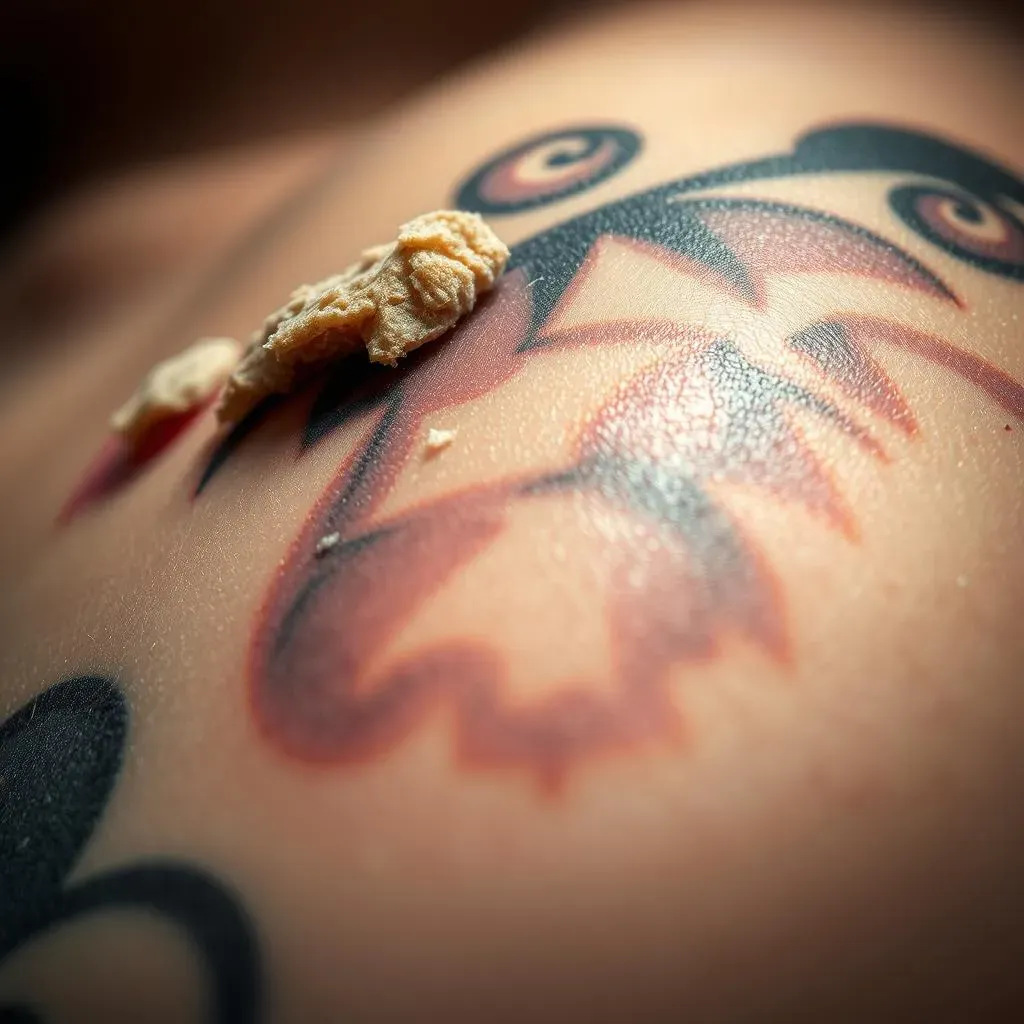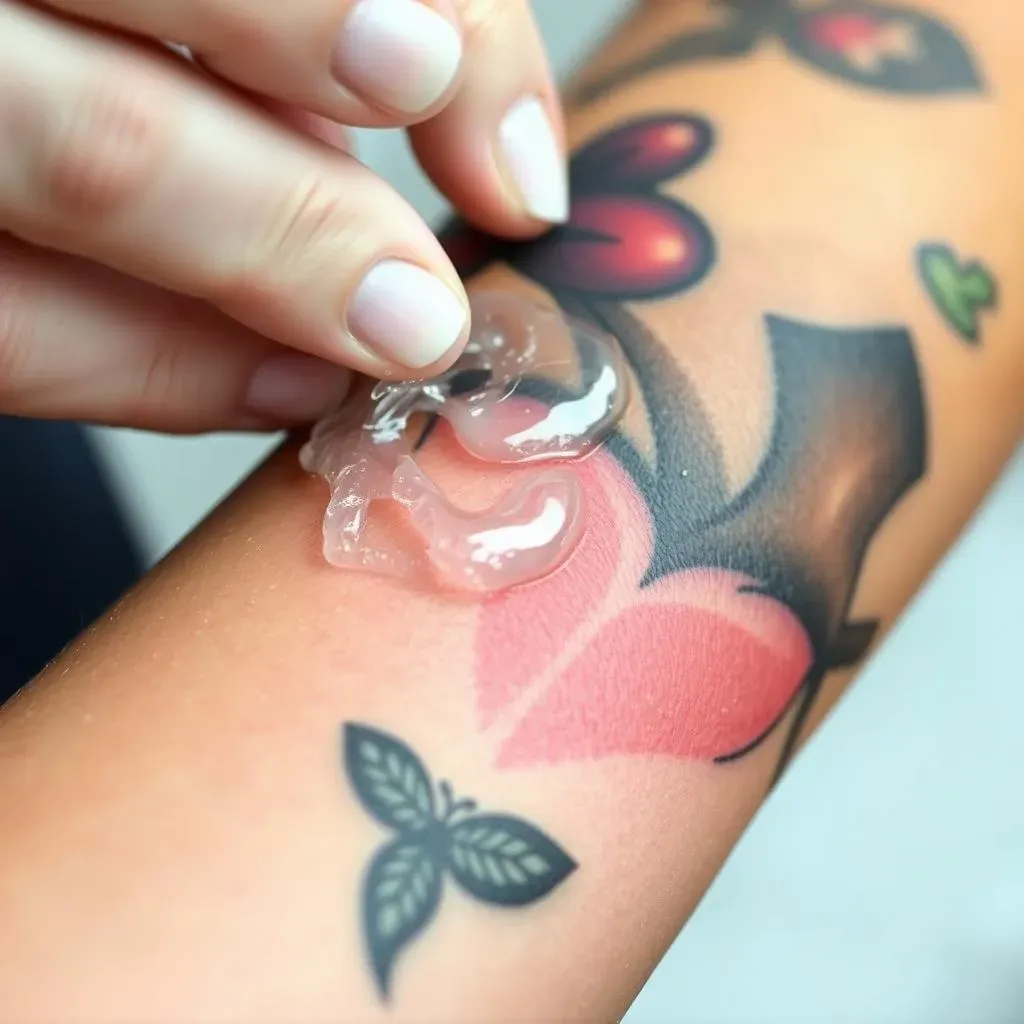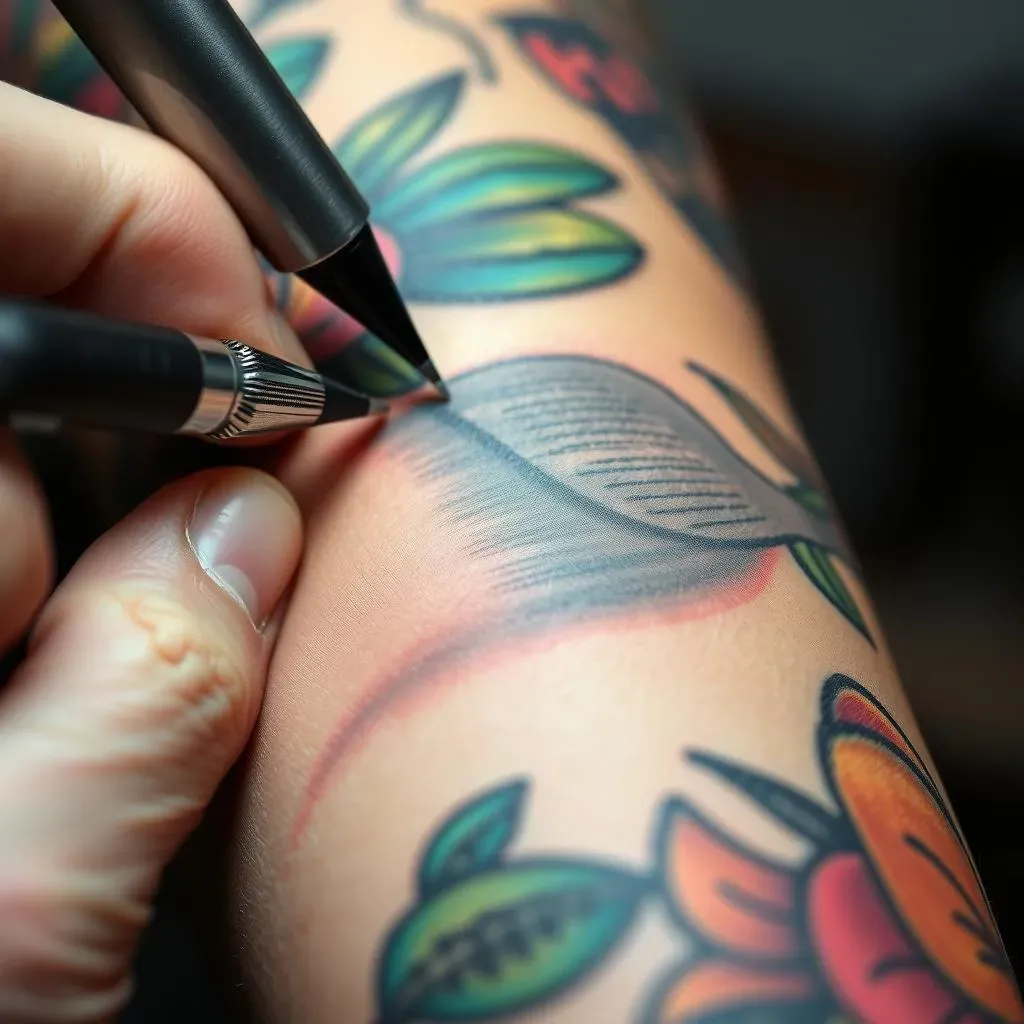Table of Contents
So, you've got some fresh ink, and instead of the vibrant masterpiece you envisioned, your tattoo looks cloudy and dull? Don't panic! You're not alone. Many people experience this, especially during the healing phase. Understanding why tattoo looks dull is the first step to restoring its brilliance. A new tattoo goes through a complex healing process, and several factors can affect its appearance along the way. This article will walk you through the common causes of a faded-looking tattoo, from the natural shedding of skin to issues with ink quality or application. We'll cover everything from recognizing the signs of a normal healing tattoo versus a problematic one, to practical tips and tricks for proper aftercare. We'll also explore what to do if your tattoo remains dull even after it's fully healed. By the end of this guide, you'll have the knowledge to keep your tattoos looking their best for years to come.
Why Does My Tattoo Look Dull? Understanding the Healing Process
Why Does My Tattoo Look Dull? Understanding the Healing Process
So, you've just gotten a new tattoo, and you're super stoked, right? You peel off the bandage, ready to show it off, but wait... Why does my tattoo look dull? It's not as vibrant as you thought it would be. Don't stress; it's actually a pretty common concern. The healing process is a rollercoaster, and that initial dullness is often just a part of the ride. Think of it like this: your skin is working overtime to repair itself, and that involves creating new layers. These new layers can temporarily obscure the ink, making it look a little cloudy or faded.
The first few weeks are crucial. Your body is essentially treating the tattoo like a wound, which, let's be real, it technically is. As your skin heals, it forms a protective layer over the tattoo. This layer, while necessary for healing, can make the tattoo appear less vibrant. It's kind of like looking at a painting through a slightly frosted window. The good news is that this is usually temporary. As the healing progresses and the outer layers of skin shed, the true colors of your tattoo will start to emerge. But patience is key! Don't go scrubbing at it, trying to speed things up. That's a recipe for disaster.
There are also a few other factors at play. The location of your tattoo can influence how it looks during healing. Areas with more friction, like your hands or feet, might take longer to heal and could appear duller for a longer period. Also, the type of ink used can make a difference. Some inks are naturally more vibrant than others, and some may settle into the skin differently. But before you start blaming the artist, let the healing process run its course. Give it a few weeks, and you'll likely see a significant improvement. And remember, proper aftercare is essential. We'll dive into that next, because trust me, what you do (or don't do) during those first few weeks can make or break the vibrancy of your ink.
Healing Stage | Appearance | What's Happening |
|---|---|---|
Initial (Days 1-7) | Redness, swelling, oozing | Inflammation, body repairing the wound |
Peeling (Days 7-14) | Flaking, scabbing, dullness | Outer layers of skin shedding |
Settling (Weeks 3-4) | Color returns, skin smooths | New skin regenerates, ink settles |
Cloudy Tattoo Causes: Dry Skin, Ink Quality, and Technique
Cloudy Tattoo Causes: Dry Skin, Ink Quality, and Technique
Dry Skin's Dullness Effect
Alright, let's talk about dry skin – the ultimate vibrancy thief! When your tattoo is healing, dry skin cells accumulate on the surface. This creates a barrier that obscures the ink underneath, making your tattoo look cloudy and dull. Think of it like trying to admire a beautiful painting through a dusty window. Not ideal, right? That's why moisturizing is so crucial. Keeping your skin hydrated helps to slough off those dead skin cells, revealing the vibrant ink beneath. But hold up, not just any lotion will do. You need something gentle and fragrance-free to avoid irritating your fresh ink. We'll get into the specifics of aftercare in the next section, but for now, remember this: hydrated skin equals a happy, vibrant tattoo.
Ink Quality Matters
Now, let's get into the nitty-gritty of ink. Not all inks are created equal, and the quality of the ink used can significantly impact the long-term vibrancy of your tattoo. Cheaper inks often contain lower-quality pigments that fade more quickly or may not be as colorfast. This can result in a tattoo that looks dull from the get-go, or one that fades prematurely. A reputable tattoo artist will always use high-quality, professional-grade inks. They know that investing in good ink is an investment in the longevity and vibrancy of their artwork. So, before you even get inked, do your research and choose an artist who prioritizes quality. Don't be afraid to ask about the types of inks they use. A good artist will be happy to discuss their materials and explain why they choose certain brands over others.
Technique Troubles: Artist's Skill
Last but not least, let's talk technique. Even with the best ink in the world, a poorly executed tattoo can look dull and patchy. An inexperienced artist might not deposit the ink at the correct depth in the skin, leading to uneven color saturation. If the ink is placed too shallow, it can fade quickly. If it's placed too deep, it can blur and spread, resulting in a muddy appearance. That's why choosing a skilled and experienced tattoo artist is so important. Look for an artist with a solid portfolio of healed tattoos. This will give you a better idea of how their work holds up over time. Pay attention to the line work, shading, and color saturation in their healed pieces. A skilled artist will have the knowledge and experience to create a tattoo that looks vibrant and crisp for years to come.
Cause | Explanation | Solution |
|---|---|---|
Dry Skin | Dead skin cells obscure the ink. | Moisturize regularly with fragrance-free lotion. |
Poor Ink Quality | Low-quality pigments fade quickly. | Choose an artist who uses high-quality inks. |
Poor Technique | Incorrect ink depth leads to fading or blurring. | Select an experienced tattoo artist. |
Tattoo Aftercare: Preventing a Dull Tattoo Appearance
Tattoo Aftercare: Preventing a Dull Tattoo Appearance
Gentle Cleansing: The First Line of Defense
so you've got this amazing new tattoo, and you want to keep it looking fresh, right? The secret weapon? Gentle cleansing. Think of your new tattoo as a delicate little flower – you wouldn't scrub it with a Brillo pad, would you? Of course not! The same principle applies here. You need to keep the area clean to prevent infection and promote healing, but you also need to be super gentle to avoid irritating the skin and causing it to look dull. Use a mild, fragrance-free soap and lukewarm water. Avoid harsh chemicals, alcohol-based cleansers, or anything with strong perfumes. These can dry out the skin and strip away the natural oils, leading to a cloudy appearance. Gently lather the soap with your fingertips, rinse thoroughly, and pat dry with a clean, soft towel. No rubbing! Remember, you're nurturing a masterpiece, not scrubbing a dirty dish.
Moisturizing Magic: Hydration is Key
Next up, let's talk about moisturizing – the holy grail of tattoo aftercare! Keeping your tattoo properly moisturized is crucial for preventing that dull, faded look. When your skin is dry, it can't heal properly, and those dead skin cells accumulate, obscuring the ink beneath. But before you slather on any old lotion, listen up. You need to choose a moisturizer that's specifically designed for tattoo aftercare, or at least one that's fragrance-free, alcohol-free, and hypoallergenic. Heavy, greasy lotions can clog pores and trap bacteria, leading to infection. Lightweight, water-based lotions are generally a better choice. Apply a thin layer of moisturizer several times a day, especially after cleansing. Don't overdo it, though! Too much moisturizer can also hinder the healing process. The goal is to keep the skin hydrated but not suffocated. Think of it like Goldilocks – you want it just right.
Aftercare Step | Description | Why It Matters |
|---|---|---|
Gentle Cleansing | Wash with mild, fragrance-free soap and lukewarm water. | Prevents infection and removes debris without irritation. |
Moisturizing | Apply a thin layer of fragrance-free, hypoallergenic lotion. | Keeps skin hydrated, promotes healing, and prevents dullness. |
Fixing a Dull Tattoo: TouchUps and LongTerm Care
Fixing a Dull Tattoo: TouchUps and LongTerm Care
Touch-Up Time: When to Revive Your Ink
so you've done everything right – you followed the aftercare instructions to a T, you moisturized like a pro, and you avoided the sun like a vampire. But alas, your tattoo still looks a little lackluster. What gives? Sometimes, despite your best efforts, a tattoo can lose some of its vibrancy over time. This could be due to factors like sun exposure, skin elasticity, or just the natural aging process. That's where touch-ups come in. A touch-up is essentially a re-inking session where the artist goes over the existing tattoo to refresh the colors and sharpen the lines. It's like giving your tattoo a little spa day to bring it back to its former glory. But how do you know when it's time for a touch-up? Look for signs like fading, blurring, or uneven color saturation. If your tattoo no longer pops like it used to, it might be time to schedule a visit with your artist.
Before you rush off to the tattoo parlor, it's important to consider a few things. First, make sure your tattoo is fully healed. A touch-up on a healing tattoo can cause complications and damage the skin. Second, choose a reputable artist with experience in touch-up work. Not all artists are created equal, and you want someone who knows how to seamlessly blend new ink with the old. Finally, be realistic about your expectations. A touch-up can significantly improve the appearance of your tattoo, but it's not a magic wand. Severely faded or damaged tattoos might require more extensive work or even a complete cover-up. But with the right artist and a little patience, a touch-up can breathe new life into your beloved ink.
Sign | Description | Action |
|---|---|---|
Fading | Colors appear less vibrant. | Consider a touch-up to refresh the colors. |
Blurring | Lines are no longer crisp and defined. | A touch-up can sharpen the lines. |
Uneven Color | Some areas are more saturated than others. | Touch-up can even out the color distribution. |
Long-Term Love: Protecting Your Investment
So, you've got your tattoo looking fresh and vibrant, whether through proper healing or a touch-up. Now, the real challenge begins: long-term care. Think of your tattoo as an investment – you want to protect it and keep it looking its best for years to come. The number one enemy of tattoos? The sun. UV rays can break down the ink pigments, causing them to fade and lose their vibrancy. That's why sun protection is absolutely crucial. Apply a high-SPF sunscreen to your tattoo whenever you're exposed to the sun, even on cloudy days. Look for sunscreens that are specifically designed for tattoos, as they often contain ingredients that help to protect the ink. And remember, prevention is always better than cure. The more diligent you are about sun protection, the less likely you are to need frequent touch-ups.
Beyond sun protection, there are a few other things you can do to keep your tattoo looking its best. Keep your skin hydrated by drinking plenty of water and moisturizing regularly. Avoid harsh chemicals and abrasive cleansers that can irritate the skin. And be mindful of friction. Constant rubbing against clothing or other surfaces can cause the tattoo to fade over time. By following these simple tips, you can help to preserve the vibrancy and beauty of your tattoo for years to come. Think of it as a lifelong commitment – a small price to pay for a piece of art that you'll cherish forever. After all, a well-cared-for tattoo is a testament to your dedication and a reflection of your personal style.
Conclusion: Keeping Your Tattoo Vibrant
Dealing with a tattoo that looks dull can be frustrating, but understanding the causes and taking proactive steps can make a world of difference. Whether it's adjusting your aftercare routine, consulting with your artist about a touch-up, or simply being patient during the healing process, remember that a little attention goes a long way. By prioritizing proper hydration, sun protection, and gentle cleaning, you can ensure your tattoos remain vibrant and a testament to your personal story for years to come. If concerns persist, don't hesitate to seek advice from your tattoo artist or a dermatologist; they can provide tailored solutions to keep your ink looking its best.